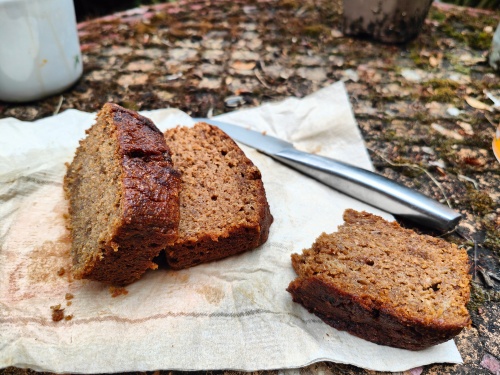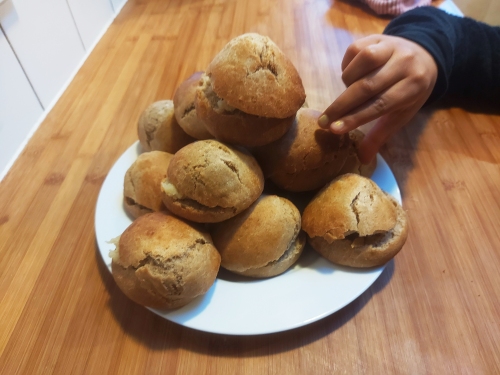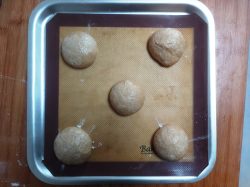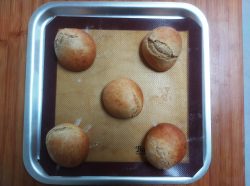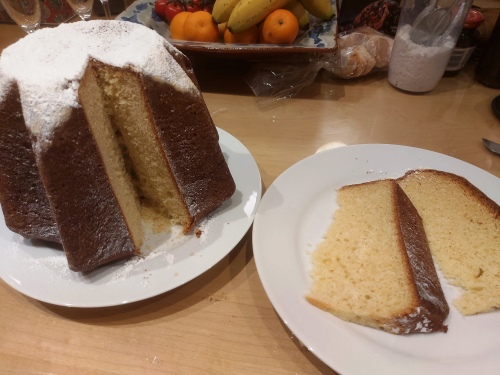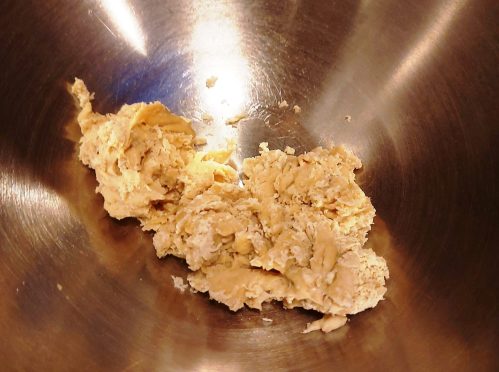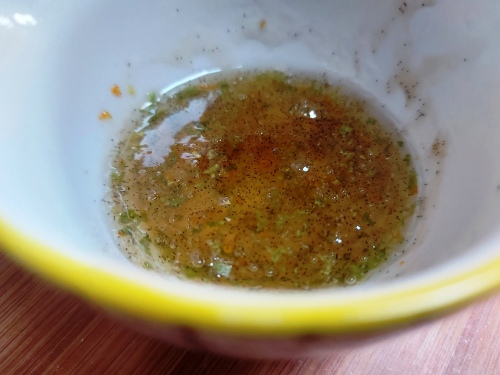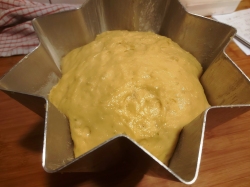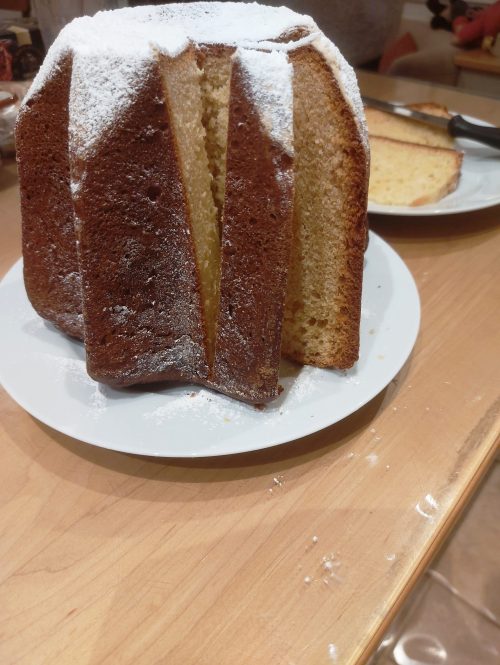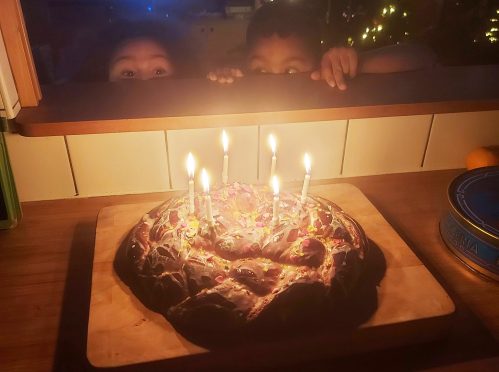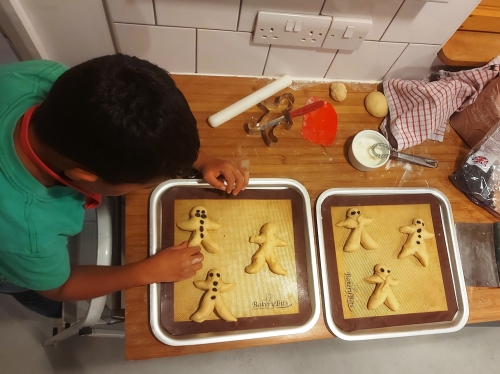Recently, I went hiking in the Lake District with my chums Alex (aka Mystic Mountain Al) and Dom. Among the provisions I took was a banana malt loaf.
I love a malty tea loaf, a Jamaican bun, things like that. Over the summer, I kept ending up with surplus ripe bananas after the kids went through phases of eating loads then stopping abruptly. So I thought I’d try a kind of hybrid malt loaf/banana loaf, something a little more wholesome than my usual white chocolate and banana cake. Not so much a treat as something you can eat for breakfast, elevenses, afternoon tea, or when climbing hills in the Lake District.
It did us proud fueling us up for Blencathra (peak in thick cloud) and England’s highest mountain, Scafell Pike (peak in thick cloud). The latter was particularly fun but also emotional, as my dad, Michael Etherington, mentioned it a lot over his lifetime.
He used to take us up Lake District hills and mountains when we were very young, as his parents lived there. This is me (chubby cheeks, purple coat) and my brother; I’m guessing it’s autumn 1974, which would make me four.
We discussed this recent trip with him while planning it. We reminisced about a great youth hostel circular we’d done in the Lakes back in 1997. He died in August, and all the while during this Lakes trip and subsequently I’ve had that confusing urge of the recently bereaved to send him quick messages, discuss our adventures with him, as a love of hiking was something he instilled in me. Messaging my mum, she said the Lake District was his favourite place. “He felt his happiest always in the Lakes,” she said.
I didn’t get any photos of cake with mountains in the background, but we did visit Castlerigg stone circle, near Keswick, where I took this photo of my dad on our 1997 jaunt. We’d already done a long day hike, and me, with the energy of a twenty-something, insisted we tack on a few more miles to visit the stones. In his sixties, he had sufficient energy for it too, despite an initial grumble. Indeed, he had a lot of energy even until recent years when arthritis compromised his lifelong physicality. We recreated the shot in memory of my dad.* I even wore his hat… though my head is clearly bigger than his.
Not only would he have liked discussing our walks in the Lakes, he would have liked this loaf as he was a fan of both cakes and over-ripe bananas.
Note, as you’re adding sticky syrups to the mix, ideally you need electronic scales. Just put your bowl on the scales and use the tare function!
Ingredients
180g butter, softened
80g dark soft brown sugar or dark muscovado
40g black treacle
50g malt syrup
2 eggs, beaten
1 tsp vanilla extract
180g plain flour (wholemeal if you have it)
3 tsp baking powder
1 tsp ground nutmeg
2 tsp cinnamon
2 tsp allspice
60g ground almonds
4-5 overripe bananas (approx 450g flesh), peeled and mashed
80g pecans (optional)
1. Preheat the oven to 160C
2. Line the base and sides of a 13x20cm loaf tin.
3. Beat the butter and sugar in a bowl until well combined and light. Beat in the syrups.
4. Gradually beat in the egg and vanilla.
5. Sieve together the flour, baking powder and spices then fold into mixture.
6. Fold in the mashed banana, along with the ground almonds. If using, fold in the pecans too. I think they’re a great addition, though the children reject the nuttiness – crazy kids.
7. Bake for 60 minutes, until a skewer inserted into the middle comes out clean. If it starts to brown too quickly, cover loosely with foil.
8. Leave to cool slightly, then remove and cool completely on rack.
9. Eat at will. Makes a great snack for a hiking holiday!
* Some may consider sitting on megaliths sacrilegious or irreverent. I discussed this with my friend Angeline Morrison, musician, historian, academic and lover of megaliths. As no one can honestly, genuinely know much about the religious beliefs of our neolithic forebears, we’ll never know if they would have objected. Certainly, for some of us, it just feels good to connect with these stones. And it was certainly important for me to feel connected to my dad. English Heritage may simply object due to the wear and tear factor. Apologies to anyone offended.

